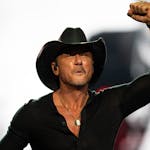There were wagon-wheel chandeliers on the ceiling, an exotic woman with a foreign accent at the front door and everyone from the Suicide Commandos to Elvis Costello and the Police on stage.
The Longhorn Bar was Minneapolis' punk-rock headquarters in the late 1970s and early '80s. The coolest bands from England and the States came to the long, low-ceilinged, Western-decorated club in downtown Minneapolis. And it was a launchpad/hangout for fledgling Twin Cities groups, including the Replacements and Hüsker Dü.
Local rockers from that era — including Flamingo, the Hypstrz, Curtiss A and the SubCommandos (a mashup of the Suburbs and the Suicide Commandos) — are getting together Saturday at First Avenue to salute the Longhorn.
"It will be like a high school reunion," said drummer John Haga, who will play with the Hypstrz, Curtiss A and even the SubCommandos for a song or two.
Former Replacements manager Peter Jesperson, now an executive at New West Records in Los Angeles, is flying in to revisit his days as the Longhorn's house DJ, along with longtime local DJ Roy Freedom. The force behind the Longhorn, Jay Berine, now a semiretired computer software exec in Marina Del Ray, Calif., is not expected to show up, however.
In June 1977, Berine started presenting punk and new-wave bands at the Longhorn, a modest steakhouse at 14 S. 5th St. that had featured such jazz stars as Sonny Rollins, Carmen McRae and Dexter Gordon in a second-floor music room. Lunch was served to business workers in the first-floor punk club, located in a storefront built into a parking ramp.
"The Longhorn was Minneapolis' CBGB's," said Flamingo lead singer Robert Wilkinson, referring to the legendary New York City punk club.
Most significantly, it was a club where bands could play original music. Other bars in town presented live music — the Cabooze on the West Bank, Kelly's Pub in downtown St. Paul and Eddie Webster's in Bloomington, to name three (First Avenue was in a disco phase) — but they demanded that bands play mostly cover songs.
The Longhorn lineup was a Who's Who of hipsterdom from 1977 to '82, including the Twin Cities debuts of Costello, Talking Heads, Blondie and the Police. The B-52's, a buzzed-about coed band out of Athens, Ga., landed at the Longhorn in 1978 with only one single, "Rock Lobster," to their name.
"They did the same set twice a night for three nights," said Jesperson, who spun records when bands weren't playing.
Iggy Pop, the Ramones, the Buzzcocks and Gang of Four also played there. Neo-rockabilly performer Robert Gordon set a 1977 attendance record of 600 even though official capacity was 410.
'Like a clubhouse'
There clearly was a scene developing in the Twin Cities.
When the Longhorn came along, the 1970s heyday of free-form radio had been quashed by corporate programmers. So most of these bands were discovered through record shops — like the Jesperson-managed Oarfolkjokeopus (now Treehouse Records) in south Minneapolis — music magazines and word of mouth.
The scene was "so small," Hypstrz frontman Bill Batson said. "We were one of seven or eight bands that was part of it. We were all pushing together. We'd see everything that played there. I'd be down there six nights a week."
The same 300 or 400 people hung out at the Longhorn — "the bands and our girlfriends," recalled Suicide Commandos guitarist Chris Osgood. "It was completely like a clubhouse."
Across the hall from the downstairs music room, there was a bar, which was the hangout spot.
"After the bar closed, it was 'Where's the party?' " Osgood said. "Since everybody knew everybody, it was not like going to a stranger's house. We'd party till 3 or 4."
The club also became a testing ground for local label Twin/Tone Records, co-founded by Jesperson. It was launched in 1978 with EPs by the Suburbs and Curtiss A, and signed the Replacements after their 1980 club debut at the Longhorn.
Always an exuberant champion of bands he liked, Jesperson convinced Longhorn poobah Hartley Frank to book the British band the Only Ones for two nights "because I wanted to see them twice." So, at his day job at Oarfolkjokeopus, Jesperson waved Only Ones tickets at nearly every customer.
"We packed both nights," he boasted, "and they only played seven or eight shows on the tour, and there were empty places everywhere else."
A documentary about the Longhorn is being shot by first-time filmmaker Mark Engebretson, a former Longhorn patron who still fronts the Silverteens. He has reportedly interviewed Berine and more than three dozen Twin Cities musicians who played there.
Like a Ramones song, the Longhorn didn't last long. Frank, a caterer and cousin of Berine's, took over the club and later renamed it Zoogie's. His heart wasn't in the music, so the scene and club didn't last past the spring of 1982. The building is shuttered but the parking ramp remains.
Twitter: @JonBream • 612-673-1719





